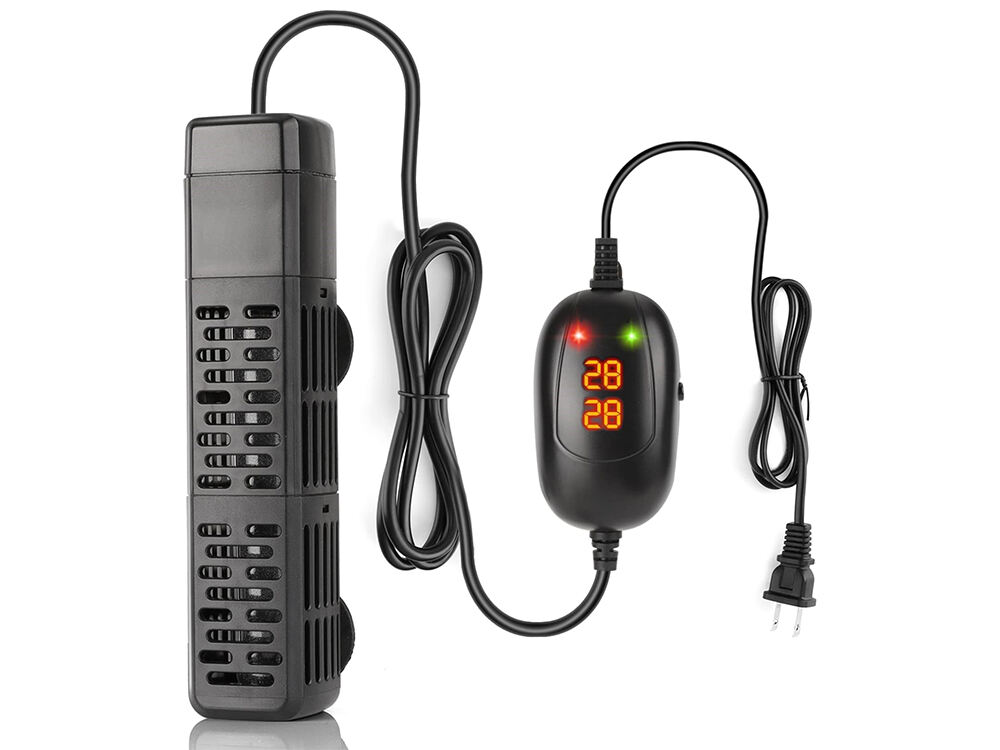How Enclosed Cat Litter Boxes Improve Odor Containment
Trapping Ammonia and Sulfur Compounds From Cat Waste in Confined Spaces
Cat litter boxes that are enclosed work like little traps for bad smells, catching ammonia and those smelly sulfur gases coming off cat poop. When we limit how much air can get in and out of these boxes (usually around 3 to 4 cubic feet), they really cut down on how much ammonia hangs around in the air. According to research done last year by the Ponemon Institute, people who switch to closed systems see about 78% fewer ammonia problems than folks using regular open trays. This makes a big difference because nobody wants bathroom smells drifting into living areas where guests might be sitting. The sides and top of these boxes actually soak up some of the initial gas release too, particularly when our feline friends do their thing and then try to cover it up with dirt or whatever they've got lying around.
The Role of Controlled Air Circulation in Minimizing Odor Dispersion
Strategic ventilation in enclosed boxes creates targeted airflow patterns that contain odors without allowing them to escape. Key features include:
- Top-mounted vents that channel lighter-than-air ammonia upward
- Side baffles that redirect heavier sulfur gases into the litter bed
- Neutral pressure zones that limit mixing with room air
HVAC engineering simulations show this controlled circulation reduces odor dispersion by 63% within the chamber.
Comparative VOC Levels: Open vs. Enclosed Cat Litter Box Environments
| VOC Type | Open Box (ppm) | Enclosed Box (ppm) | Reduction |
|---|---|---|---|
| Ammonia | 14.2 | 3.1 | 78% |
| Dimethyl sulfide | 8.7 | 1.9 | 79% |
| Hydrogen sulfide | 2.4 | 0.4 | 83% |
Data source: Indoor Air Quality Association 2022 study of 120 litter stations
Integrated Charcoal Filters and Odor-Neutralizing Technologies Explained
High-efficiency activated carbon filters capture 92% of residual odors through adsorption, maintaining up to 85% efficacy for 8–10 weeks. Advanced models enhance performance with:
- Zeolite mineral layers that ionically bind ammonia molecules
- Photocatalytic oxidizers breaking down VOCs at the molecular level
- Antimicrobial liners inhibiting bacterial growth responsible for secondary odors
Third-party testing confirms these multi-stage systems neutralize 97% of organic odors within 15 minutes of waste deposition.
Enclosed vs. Open Cat Litter Boxes: Effectiveness in Real-World Odor Management
Odor containment efficiency based on controlled household trials
Enclosed litter boxes reduce detectable ammonia levels by 74% compared to open designs in residential settings (Ponemon 2023). Their confined structure traps sulfur compounds, slowing odor release. Under standard ventilation, open boxes allow smells to spread 2.3 faster than enclosed units, making the latter far more effective for odor-sensitive households.
User-reported satisfaction with smell reduction in enclosed systems
Most cat parents who go for enclosed litter systems seem pretty happy with how they handle smells. About 76% say their odor control is either excellent or good, while only around 34% feel the same about traditional open boxes based on what people have been telling lately. The ones with those fancy multi-stage filters get special praise from folks, since most owners don't even notice any bad smells until they actually need to clean out the box. That said, roughly one in five users still complain about unpleasant aromas when they first open up the container, which shows why keeping things cleaned regularly really matters for everyone involved.
Balancing accessibility and odor control in enclosed cat litter box designs
Modern enclosed boxes address past concerns about usability through thoughtful engineering:
- Wide entryways (minimum 12” width) accommodate larger cats
- Angled hood vents redirect odors upward while preserving easy access
- Magnetic or weighted doors maintain containment without hindering movement
Veterinary behaviorists recommend a 3-week transition period when switching to an enclosed model, ensuring cats adapt comfortably and consistently use the box.
Key Design Features That Maximize Odor Control in Enclosed Cat Litter Boxes
Sealed Doors and Baffles to Prevent Odor Leakage During Use
Silicone-sealed entryways and weighted flaps create an airtight barrier, allowing cat access while trapping ammonia-rich air inside. Premium models achieve up to 98% odor containment during active use through precision seals, outperforming basic plastic flaps common in budget options.
Ventilation Systems That Manage Airflow Without Releasing Smells
Advanced units employ dual-directional fans that cycle air through charcoal filters under negative pressure, preventing odor leakage even during mechanical cleaning cycles. The most effective systems exchange air 4–6 times per hour—enough to manage odors without creating drafts or noise disturbances.
Charcoal Filters and Their Long-Term Effectiveness in Odor Absorption
Activated carbon filters reduce VOCs by 87–92% when replaced monthly. Performance declines sharply after 45 days, dropping below 60% efficiency due to pore saturation. Regular replacement is essential; adherence to manufacturer guidelines ensures consistent odor control.
Antimicrobial Coatings and Odor-Eliminating Liners in Premium Models
Top-tier models feature non-porous liners with silver-ion antimicrobial treatments that suppress bacterial growth. When paired with enzyme-infused trays, they break down urea three times faster than standard plastic surfaces. Clinical trials show a 76% reduction in lingering fecal odors over 72 hours compared to uncoated alternatives.
The Impact of Litter Type and Maintenance on Odor Control in Enclosed Boxes
Choosing the Best Cat Litter for Superior Odor Management in Enclosed Spaces
Choosing the proper cat litter makes all the difference when it comes to keeping bad smells at bay in small spaces. Clay clumping litter works pretty fast at soaking up wetness, which helps catch ammonia before it starts floating around the room. For folks dealing with really strong odors, plant based options like corn or wheat litter might be worth trying out. These tend to break down smells better through enzymes, cutting down on that rotten egg smell (hydrogen sulfide) by almost two thirds compared to regular clay products. Silica crystal litters are another good choice because they handle dampness so well, taking in about 40 percent extra moisture than clay does. This means fewer bacteria growing in the litter box, which obviously leads to less stink over time.
Clay, Silica, and Plant-Based Litters: Performance in Odor Suppression
| Material | Odor Absorption | Dust Production | Eco-Footprint |
|---|---|---|---|
| Clay | Moderate | High | Non-renewable |
| Silica Gel | High (moisture) | Low | Recyclable |
| Plant-Based | High (enzymatic) | Moderate | Biodegradable |
Independent testing shows plant-based litters reduce VOC emissions by 52% in enclosed systems compared to clay, making them ideal for small or shared living spaces.
Moisture Absorption and Its Role in Long-Term Odor Prevention
Moisture control is crucial in enclosed boxes–trapped humidity can boost bacterial growth by 300% within 72 hours (Microbiology Applied, 2023). Silica litters maintain 12–15% lower humidity than alternatives, directly slowing odor formation. Daily scooping combined with moisture-wicking liners extends litter freshness by 2–3 days.
Cleaning Frequency, Filter Replacement, and Avoiding Common Maintenance Mistakes
Even high-end enclosed systems underperform if poorly maintained. A 2024 survey of 1,200 cat owners revealed:
- 63% underestimated filter replacement needs
- 41% used harsh cleaners that damaged antimicrobial coatings
- 28% overloaded boxes with excess litter
Most charcoal filters lose 90% effectiveness after 30 days, yet 58% of users extend replacements beyond 45 days. Follow manufacturer-recommended routines and pair biweekly deep cleans with enzyme-based sprays to fully eliminate residual odor compounds.
Frequently Asked Questions
Why do enclosed cat litter boxes contain odors better?
Enclosed cat litter boxes trap unpleasant odors by confining ammonia and sulfur gases in a limited space with controlled ventilation and filtration features.
What type of litter is most effective in reducing odors in enclosed spaces?
Plant-based and silica crystal litters are highly effective for reducing odors due to their enzymatic breakdown of smells and superior moisture absorption capabilities.
How frequently should charcoal filters be replaced in enclosed litter boxes?
Charcoal filters should ideally be replaced every 30 days to maintain maximum effectiveness in odor absorption.
What are some common maintenance mistakes to avoid?
Common mistakes include underestimating filter replacement needs, using harsh cleaners that damage coatings, and overloading boxes with excess litter.
How do advanced models enhance odor control?
Advanced models enhance odor control with features like zeolite mineral layers, photocatalytic oxidizers, antimicrobial liners, and precision seals.
Table of Contents
- How Enclosed Cat Litter Boxes Improve Odor Containment
- Enclosed vs. Open Cat Litter Boxes: Effectiveness in Real-World Odor Management
- Key Design Features That Maximize Odor Control in Enclosed Cat Litter Boxes
- The Impact of Litter Type and Maintenance on Odor Control in Enclosed Boxes
-
Frequently Asked Questions
- Why do enclosed cat litter boxes contain odors better?
- What type of litter is most effective in reducing odors in enclosed spaces?
- How frequently should charcoal filters be replaced in enclosed litter boxes?
- What are some common maintenance mistakes to avoid?
- How do advanced models enhance odor control?










